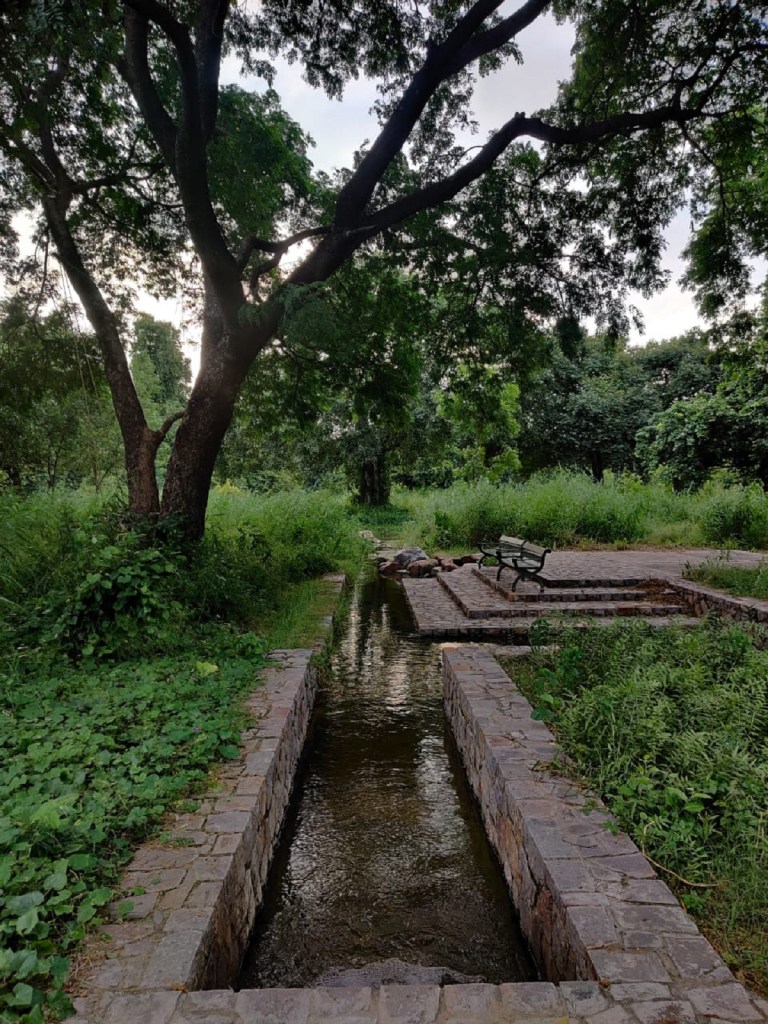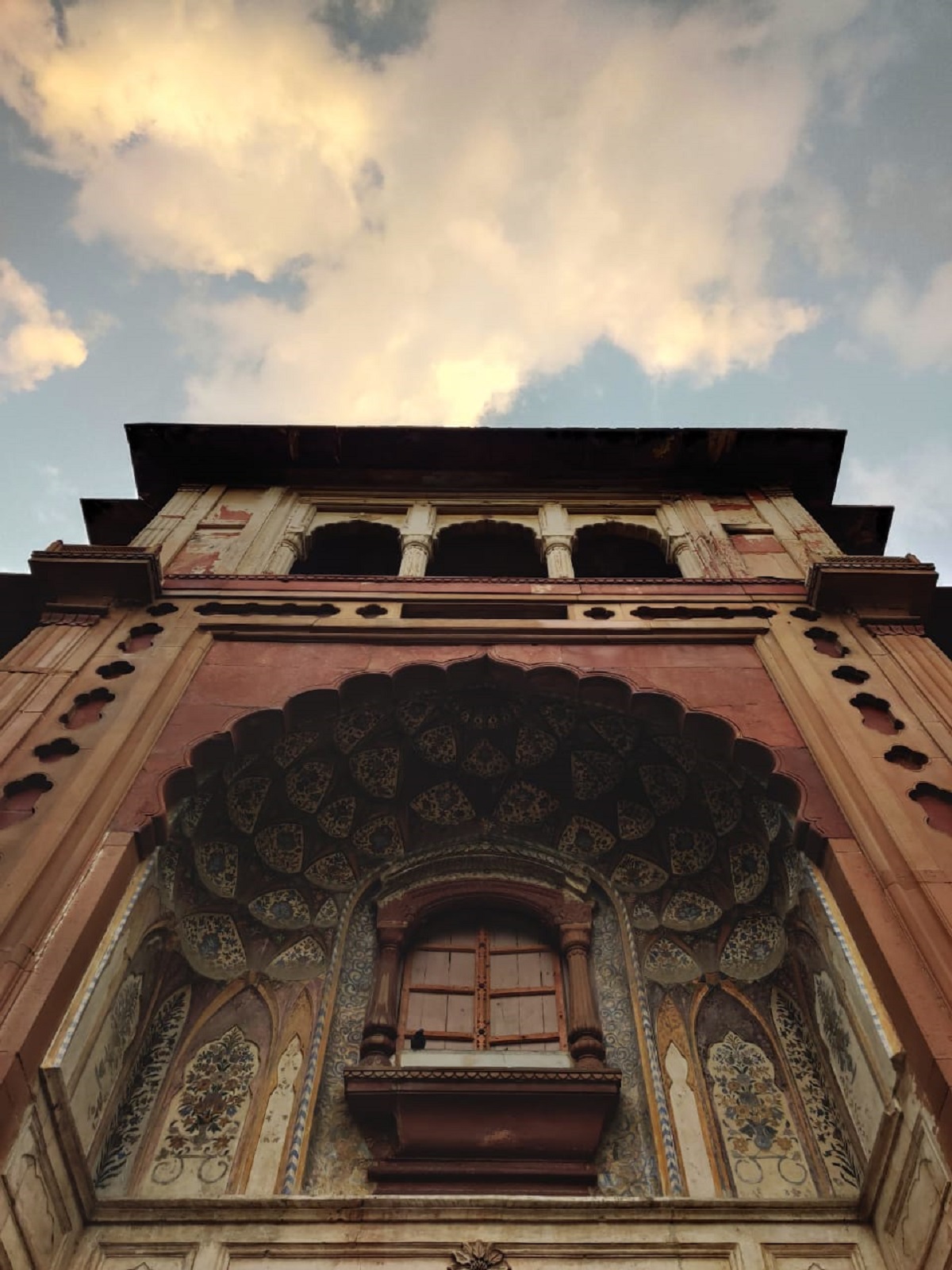There exists a fine line between history and heritage. Our history, according to the books, lives in stone monuments and larger-than-life structures. It consists of towering monuments, expansive halls and rustic motifs. It speaks of kings and kingdoms, riches and grandeur, wars and battles. As for our heritage – it is all that lies in between. It is in the pages of recipe books of food we eat, the letters we write, the medicines we take. It is in stories we share, songs we sing and the gossip we whisper. It exists not behind the plexiglass of museums, but within us – our communities and families. Our heritage is our history. However, we often tend to forget the role we ordinary people have played in our history. While the preservation of monuments and structures is important, it has resulted in this separation between the people and their history – a separation fostered by dusty, glass-encased, cement-ridden ruins that dot the expanse of most of India, especially New Delhi which is home to over 3000 historical monuments and sites. Historical preservation in India currently does not attempt to bridge this gap between people’s heritage and history, instead focuses merely on preserving monuments as ruins to be admired from afar. To create an environment where heritage is not only admired but lived in, conservation needs to be inclusive of the people and the culture that has sustained the very monument that is being preserved.
The historical architecture of Delhi spans centuries of civilization, starting from the 12th century (or even earlier, according to some historians) under the Delhi Sultanate. From the Qutub Minar and the Red Fort, to Mirza Ghalib’s tomb and Roshanara’s gardens, to the Kotla Mubarakpur fort – it has an architectural legacy that almost mirrors the plurality of its culture. However, the upkeep and restoration of these monuments leave much to be desired. As heritage enthusiast Sohail Hashmi puts it, “There isn’t enough understanding of how to go about conserving heritage at the governmental level, nor are there ever enough funds for the Archaeological Survey of India”.
Even the process of conservation and restoration of monuments has often displayed a lack of expertise from the ASI. Monuments deserve special restoration techniques since the materials that were used in their construction are different from what we use now, and the ravages of time and elements have rendered these monuments delicate. Sohail Hashmi explains how “in the 2010 Commonwealth Games, 27 monuments were selected around Delhi to receive a facelift, and the ASI was tasked with that, to be completed within two weeks. The original plaster used in the monuments would take a year to dry if used properly, and so the ASI, placed in a difficult situation, used cement on these structures. It ruined those monuments”.
The deprived nature of the government’s heritage conservation infrastructure hardly allows for engagement with historical monuments. Most structures in Delhi have a few plaques around the heritage compound explaining the basic history of the place, but nothing further. For a city that is oozing with historical significance at every street corner, it is an affront for Delhiites to not be more aware of the heritage they’re living around. However, the entire blame for such negligence cannot be placed on the ASI and the Indian government. For decades, the decisions on which monuments to preserve and related methodology have been taken based on the procedure established by the British colonialists, meaning that monuments requiring protection were chosen based on what the British felt was worth preserving. “So while the Qutub Minar was deemed worthy of conservation, the adjacent caravanserai that was built in the 17th Century was broken down by the British because they didn’t believe it was worth preserving,” Sohail Hashmi continues.
The city of Shahjahanabad, a bustling region dating back to the period of Mughal Emperor Shah Jahan is now but a shadow of its previous self. Several other monuments lay forgotten and ruined around Delhi’s landscape.

One such monument is Abdur Rahim Khan-i-Khanan’s tomb in the Nizamuddin East region. Built during the 16th century by one of Akbar’s famous courtiers for his wife, it had been reduced to a dilapidated ruin in the last few centuries. It was not until the Aga Khan Trust for Culture (AKTC) began its work under the Nizamuddin Renewal Project that the structure was restored and with it, a new process of restoration was brought about.

This process prioritises the restoration of monuments to their former glory, keeping in mind the methods and craftsmanship that had been used earlier. It thinks of conservation as serving the purpose of not just preserving history, but also making the structures useful in the present. The Abdur Rahim tomb, for instance, employed craftsmen skilled in the art of carefully restoring every motif on the dome and walls of the tomb, putting in almost 1,75,000 man-days of work. The work by the AKTC also included bringing back to life Rahim’s history, his poetry and his significant role in the Mughal court. It provided visitors and citizens of Delhi with a wholesome experience of the history of the place, its aesthetic beauty as well as its living heritage. The AKTC has worked similarly in places such as the Sunder Nursery, Humayun’s Tomb, Isa Khan’s tomb and other structures in the Nizamuddin region. Alongside archaeological restoration, the Nizamuddin Renewal Project focuses on enhancing the importance of the Nizamuddin Basti itself as a living heritage region and attempting to liven up its heritage value through food, music, and cultural traditions of the people living in it.


India is a country with a rich heritage, one that deserves not only to be protected but also cherished. While we are miles away from sustaining an inclusive development and conservation strategy in every monument and historical site in the country, we are on the right path. Projects like Aga Khan’s are required in other areas while aiming to protect our heritage. The restoration of our country’s heritage requires the government to invest in a manner that actively involves locals as stakeholders. With community engagement at its core, historic preservation can be turned into a culturally as well as economically profitable venture for the government and local residents.
Picture Credits: Nayana Vachhani
Akanksha Mishra is a second-year political science and media studies student at Ashoka University.
We publish all articles under a Creative Commons Attribution-Noderivatives license. This means any news organisation, blog, website, newspaper or newsletter can republish our pieces for free, provided they attribute the original source (OpenAxis).

